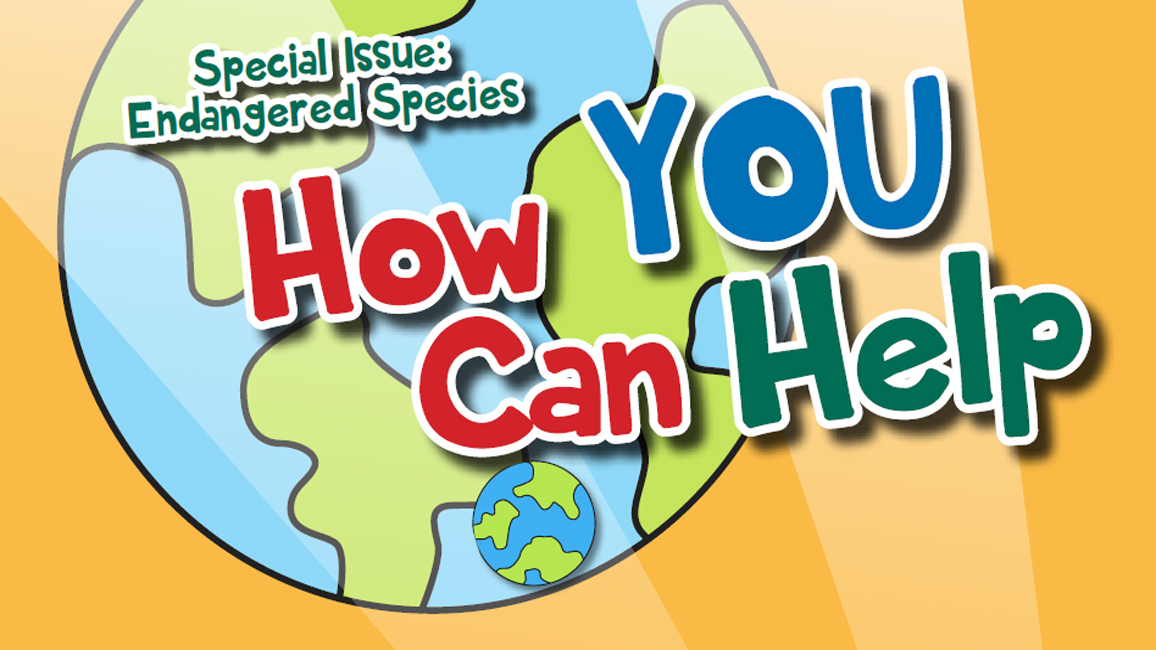
How You Can Help Wildlife
By Ranger Rick Editors; art by Jack DesrocherOver the last 50 years, the Endangered Species Act has helped save many plants and animals from extinction. Even so, millions of other species in the world are still in danger. There is some good news, though. Scientists, some lawmakers, and others are working to protect wildlife in many different ways. Wish you could help? You can! Here are some ways to make the world around you a cleaner, healthier, safer place for wildlife—AND people.
 1. Plant native plants.
1. Plant native plants.
Native plants are ones that grow naturally where you live. They make the best foods for local wildlife. Maybe you have space around your home to add native plants. Or you can offer to create a native plant garden at your school or local park. To find plants that are just right for your area, visit nwf.org/NativePlantFinder
 2. Help remove invasive plants.
2. Help remove invasive plants.
Non-native plants are ones that came from other places. Some of these plants can become invasive. That means they spread quickly and crowd out native plants. Find out which plants are the worst invaders in your area, and pull or dig them up when you can. Check with your local nature center to see if there are ways to volunteer to remove invasives from public places.
 3. Don’t use pesticides.
3. Don’t use pesticides.
People use chemicals called pesticides to kill insects and other creatures that eat crops and other plants. But pesticides kill more than just pests. They kill pollinators such as bees and butterflies. Many of them also harm frogs, birds, and many other wild animals. Be sure to never use them, and be ready to tell others about the harm they do.
4. Leave wild animals and native plants in the wild.
Capturing wild animals as pets or taking wild plants for a garden is against the law. And besides, these living things deserve to live right where they are. It’s best just to watch and enjoy them in the wild where they belong.
 5. Keep your distance.
5. Keep your distance.
Of course, you want your outdoor space to be a good place for local birds and bugs. But some wild animals should be kept at a distance. Bears, raccoons, coyotes, and other creatures can get into trouble when they lose their fear of people and come too close to houses. So, keep your outdoor trash in tightly closed bins, and never leave pet food outside.
6. Visit state and national parks and wildlife refuges.
These places provide safe homes for many endangered plants and animals. When you pay to visit, your money goes to support that habitat. You also learn more about how and why our wildlife should be protected.
 7. Buy less stuff and recycle what you can.
7. Buy less stuff and recycle what you can.
Much of the clothing, toys, and packaging we bring home ends up in landfills. Even worse, some trash ends up in wild places such as rivers and oceans, where it can injure wildlife. Before you buy anything, think about whether you really need it. And try to recycle or donate the stuff you DO buy when you’re done with it.
8. Pick up trash.
This may be the easiest thing you can do to help wildlife where you live! Whenever you go for a walk or a bike ride, bring a bag. Fill it with the litter you see along the way. This helps keep junk out of our waterways and away from wild animals that can be harmed by it.
 9. Learn about the endangered species that live near you.
9. Learn about the endangered species that live near you.
If you understand why these plants and animals are important, you can share what you know with friends and family. The more people looking out for endangered species, the better!


















